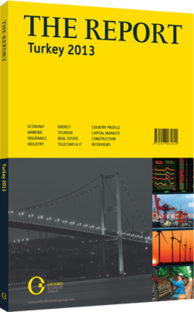An unorthodox approach: Understanding the central bank’s corridor interest rate policy
Monetary policy is not as simple or predictable as it used to be anywhere, but Turkey’s central bank governor, Erdem Başç›, is breaking new ground in making things more complicated and keeping people guessing. Since being promoted from deputy governor in 2011, Başç› has been alternately criticised and applauded for the innovative and often unexpected moves he has taken in trying to steer the economy through uncharted waters.
New Challenges
Like all emerging market central banks, Turkey’s has faced a challenging environment ever since the global financial crisis of 2008 rewrote the rules on how the major central banks of the world manage monetary policy. Since the crisis, most developed world central banks have held interest rates near zero, and many have expanded money supply rapidly in an effort to stimulate faster recovery. The hope is that these growing pools of cash will be invested at home. But much of the money has instead flowed abroad, looking for higher-yield investments that may be relatively safer than developed market assets that pay similar yields.
For emerging markets, these inflows of capital are a blessing and a curse. On one hand, the inflows lower the interest rates that emerging market banks and companies pay to borrow money from abroad, which boosts growth. On the other hand, the inflows drive up the values of emerging market currencies, reducing competitiveness and sapping growth. The inflows are also often in the form of short-term debts or demand deposits, which can be withdrawn quickly in any sign of trouble – as happened around the world during 2011 and 2012.
Innovative Solution
Başç› was not the first emerging market central banker to recognise that traditional tools are not very effective in managing monetary policy in this situation. As inflows increase and inflation accelerates, orthodox central banking advises to raise interest rates, but that strengthens the currency and encourages more inflows. On the other hand, lowering interest rates discourages inflows but encourages domestic borrowers and weakens the currency, creating more inflation.
Başç›’s system is to have two different policy interest rates. The lower point on this range is intended to be more relevant to foreign investors, while the higher end is relevant to domestic borrowers. It does not rely, however, on capital controls. Banks who wish to borrow from the central bank are not told in advance which of the two rates they will be offered; instead they find out each day. The two-rate policy is called a “corridor”. Başç› also changed rules to allow banks to hold required reserves against their lira deposits in foreign exchange or gold.
Reaction
Banks were initially unsure of how to respond. As Emre Alpan İnan, manager of the banking and research division of the Banks Association of Turkey, told OBG, “When this system started, banks didn’t know which rate would be offered, so they priced their loans based on the maximum rate. But now, banks can predict which funding rate the central bank will offer. They know which moves in the markets will produce a reaction.” İnan said Başç›’s policy has been “very effective in limiting capital inflows and economic growth, and in stabilising and lowering the inflation rate. Our central bank’s recent policies are more effective than in previous years or other emerging market central banks.”
The Banker, a trade magazine published by the Financial Times, concurred, awarding Başç› its “Central Bank Governor of the Year” award in January 2013.
The Banker wrote that Başç› “moved ahead of other emerging markets to adopt experimental measures designed to curb hot money inflows”. It concluded, “A corridor around its policy rate meant that high inflows led to an even lower return, further discouraging foreign money seeking yield.” The unorthodox approach may well prove to be right. For now it has helped to keep the economy on a steady growth path with relatively little evidence of direct fallout.
You have reached the limit of premium articles you can view for free.
Choose from the options below to purchase print or digital editions of our Reports. You can also purchase a website subscription giving you unlimited access to all of our Reports online for 12 months.
If you have already purchased this Report or have a website subscription, please login to continue.

